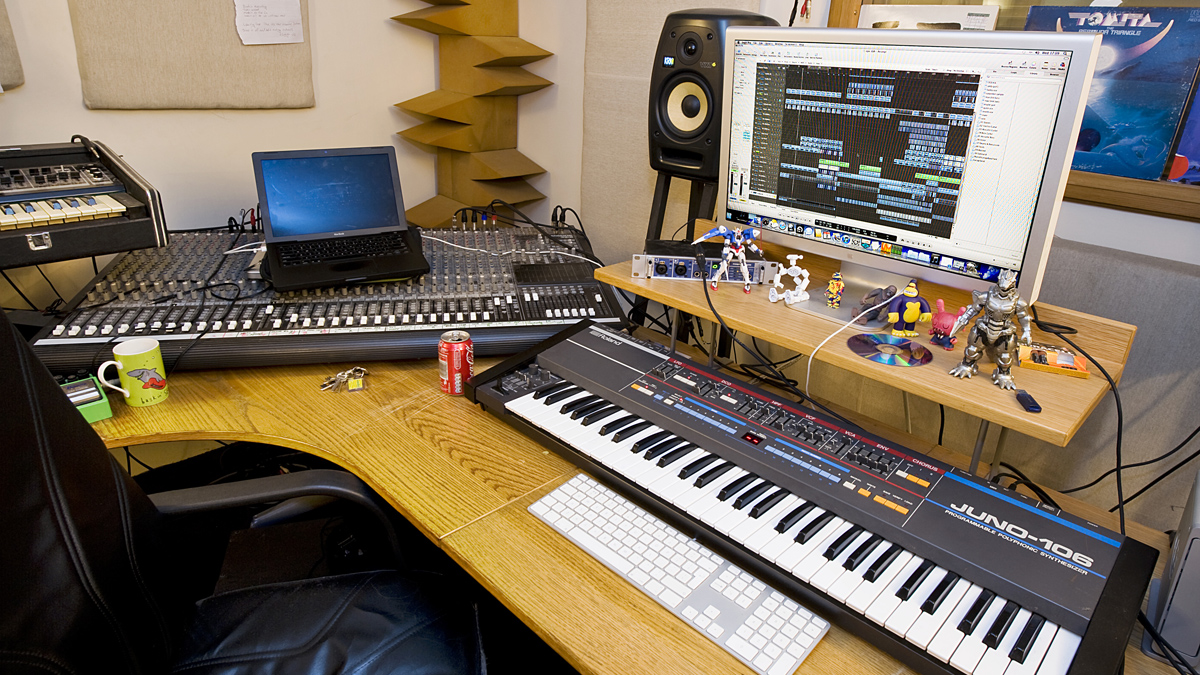11 golden rules for replaying a sample in your DAW
The art of rebuilding a sound

Many of us like using samples from existing records in our music, but as you probably know, if you do, the thorny issue of music copyright comes into play.
One solution to the problem is to sack off the original sample and make a recreation instead. These so-called 'replays' are essentially super-accurate cover versions that are practically indistinguishable from the real thing.
If a sample is 'replayed', then none of the original performers have to be paid, and the licence to use just the composition is comparatively cheap - it's no more expensive than licensing a cover version. Simply apply for a mechanical licence from the MCPS, letting the publisher know that you intend to create a replay.
Here are 11 tips for anyone who's considering replaying a sample...
1. Do your research
Find out the year your chosen replay was produced and then research studio gear and instruments from that era. Once you've got your gear list together, you can go hunting for suitable virtual instruments and effects to recreate their tones.
2. Use matched-level comparisons
If you're flicking back and forth between your replay and the original sample to make comparisons, make sure that they're at the same volume, since louder always sounds subjectively 'better'. If you're having trouble matching levels, try using an RMS or VU meter plug-in.
3. Nail the big jobs first
Try to pin down the big wins first by dealing with the percussion, bass and melody lines. This is especially important in complicated arrangements or if you're pressed for time. The smaller details of your replay might be masked by other instrumentation in the final mix anyway.
Get the MusicRadar Newsletter
Want all the hottest music and gear news, reviews, deals, features and more, direct to your inbox? Sign up here.
4. It's all in the detail
If there is one element of the sample that stands out as particularly distinctive, it may help to work on that first. Any problems with the rest of the sounds will be less noticeable if the one defining characteristic of the replay is absolutely perfect.
5. Leave some room
Incorporate a couple of intro and outro bars either side of the sample section that you want to use. A short intro will ensure that all the trigger and reverb/delay tails carry over from previous drum/instrument sounds.
6. Don't overdo it
Don't go overboard with the vinyl or tape emulation. We're used to imagining that these recording mediums are noisy and dirty, but that's more to do with our recollections of grotty consumer cassette tapes and abused, overplayed vinyl.
In fact, studio tape systems and good quality vinyl and turntables can produce clear and bright reproductions. Audio engineers of the past knew how to work within their limitations to produce. Use a 'vinyliser' plug-in to recreate the sound of the medium, but don't go overboard with the effect as it'll just muddy your mix.
7. Consider the filtering
If you're going to be filtering your final sample replay when you use it in your track, it may not be worth stressing about the highs/ lows in your reproduction. For example, if you're going to filter out the low frequencies in the final mix to be replaced with your own kick drum and bassline, it's a waste of time trying to get the bottom end sounding just the same.
8. Track down alternate versions
Hunt down the 12-inch version of the song you're replaying, as you may find that the sounds you're trying to pinpoint are played in isolation at some point during the extended remix. A synth or guitar line played on its own is much easier to analyse and recreate!
9. Archive your replays
Keep your stems and project folders, just in case a record company or publisher wants proof that you've replayed the sample rather than used the original audio. If your track is being released, send these to your record company along with your master recording as it'll save drama in the event of a dispute.
10. Know your rights
Don't forget, if you're releasing a track with a replay, you still have to have a mechanical copyright licence in place, even though you've recreated the sample. Contact the MCPS for details.
11. Steal the vibe, not the tune
Once you're happy with a replay, try ditching all of the musical content but retaining your instruments, plugins and fader positions. Use this template to compose your own 'soundalike' riffs, which have the advantage of being completely copyright-free!
Computer Music magazine is the world’s best selling publication dedicated solely to making great music with your Mac or PC computer. Each issue it brings its lucky readers the best in cutting-edge tutorials, need-to-know, expert software reviews and even all the tools you actually need to make great music today, courtesy of our legendary CM Plugin Suite.










